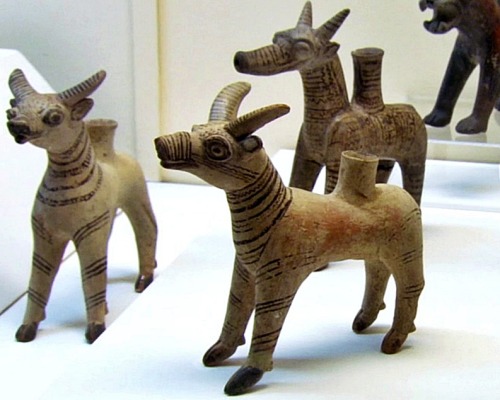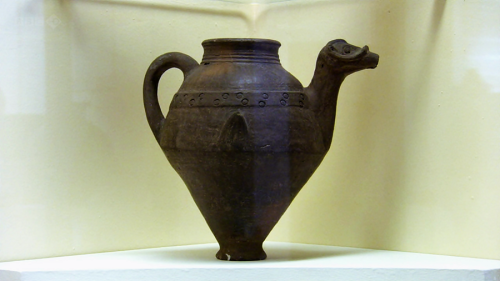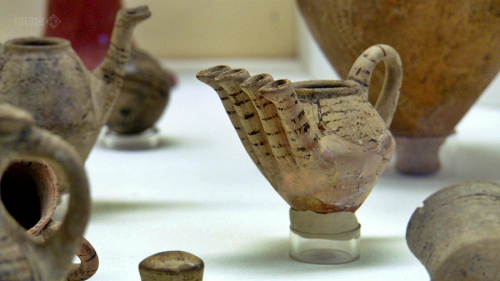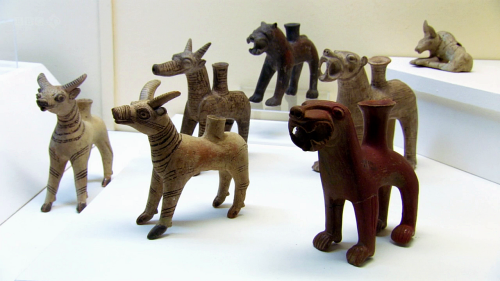richard-miles-archaeologist:Ancient Worlds - BBC Two Episode 1 “Come Together”Assyrian a
richard-miles-archaeologist:Ancient Worlds - BBC Two Episode 1 “Come Together”Assyrian animal shaped vessels -Rhytons- from the archaeological site of Kültepe, ancient city of Kanesh, Anatolia, Turkey (21st - 18th centuries BC). Kültepe became a key centre of culture and commerce between Anatolia, Syria, and Mesopotamia during the first quarter of the 2nd millennium BC. Assur, the capital of the Old Assyrian Kingdom, established one of the largest trade network the world had ever seen at Kanesh (Karum Kanesh). A huge assortment of artefacts from the Assyrian colony period have been recovered in the excavations at the site. The word rhyton comes from the Greek rhyta, meaning “to run through.” Rhytons featured a filler hole at the top and a hole at the bottom so that the liquid could flow through them. They were used in religious ceremonies such as libations. Rhytons in the form of animal heads or horns are believed to have originated in Persia. Their spread to other civilisations was by the ancient Silk Roads of Central Asia and by Persian military campaigns. Rhytons were also used by the Minoans and Mycenaens in the Bronze Age.“The Assyrian exhibit”, Anatolian Civilizations Museum, Ankara, Turkey -- source link
Tumblr Blog : richard-miles-archaeologist.tumblr.com
#history#animals#classical history



